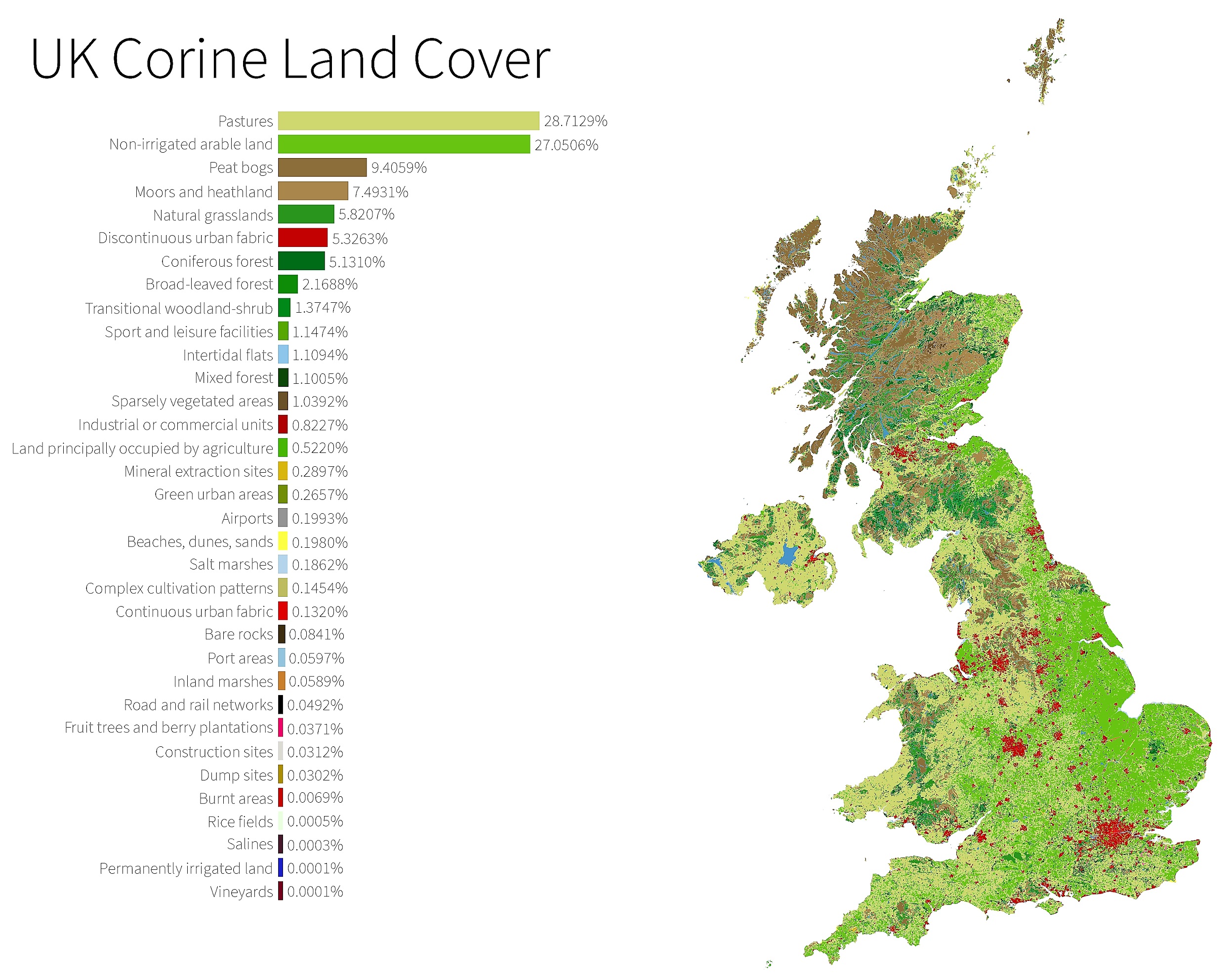Ask the average Brit (83% of them to be truthful) how much land is densely built on and the answer you will get is “about half”. The real statistic comes from a report by Professor Alasdair Rae, of the University of Sheffield A Land Cover Atlas of the United Kingdom which was published in November 2017 using Corine Land Cover data from 2012.
The 0.1% of land areas considered to be CUF (made up of ‘continuous urban fabric’) are those that are most densely populated – where at least 80% of ground is impermeable and comprises buildings, roads and other artificial surfaces. The alternative DUF (‘discontinuous urban fabric’) accounts for just over 5.3%, and in fact only 5.4% of UK land is considered ‘urban’ at all. So about 10% of 1% of the UK is actually heavily urbanised.
Pasture land (28.7%) and non-irrigated arable land (27%) accounts for most of the UK’s landscape, while peat bogs (9.4%), moors and heathland (7.5%), natural grassland (5.8%), coniferous forest (5.1%) and broadleaf forest (2.1%) make up between them nearly a third of the landmass.
The report reveals the UK local authority areas with the highest percentage of each land cover class. In London, the City of London has the highest percentage of CUF (97.6%) and Lewisham the highest percentage of DUF (87%). Westminster has most land classified as ‘green urban’ (21.1%) largely because of its royal parks. Richmond upon Thames is classified as nearly 41% ‘sport and leisure’ (golf clubs). Hammersmith and Fulham is 6.3% road and rail networks.
The statistic might come as something of a surprise to those of us among 83% of the UK population who live in urban areas. In fact, a recent Ipsos MORI online survey of the British public revealed that the percentage of UK land that was densely built on was thought to be on average 47%! Thanks to propertysurveying.co.uk the full article can be seen here.
At Cadman Homes we are always asked about the new developments in and around the Rugby, Lutterworth and Coventry area that we serve. “You’re an estate agent”, people say “You must have some info about the X or Y development”. Nine times out of ten we can help, straight off the top of our heads. On the one occasion we don’t possess the information in the “old grey matter” we will actively seek to find out for you.
New developments, especially in semi-rural and rural areas are, understandingly a concern for many people. The “fear factor” of the unknown affects on population density, transport links and school placements is rightly a concern. However we find that once someone has been shown the plans, location and make up of a site they very often come round to a more positive outlook.
Our job as estate agents is to educate and inform as much as it is to sell and rent houses. We have a duty to the community we serve to be a point of information and advice.
This is why the “High Street” estate agent has a massively relevant and important role to play in the community. We are another service, yes, like a bank or hairdresser, but more so we are here to help people buy, sell and rent their biggest asset – their home.
